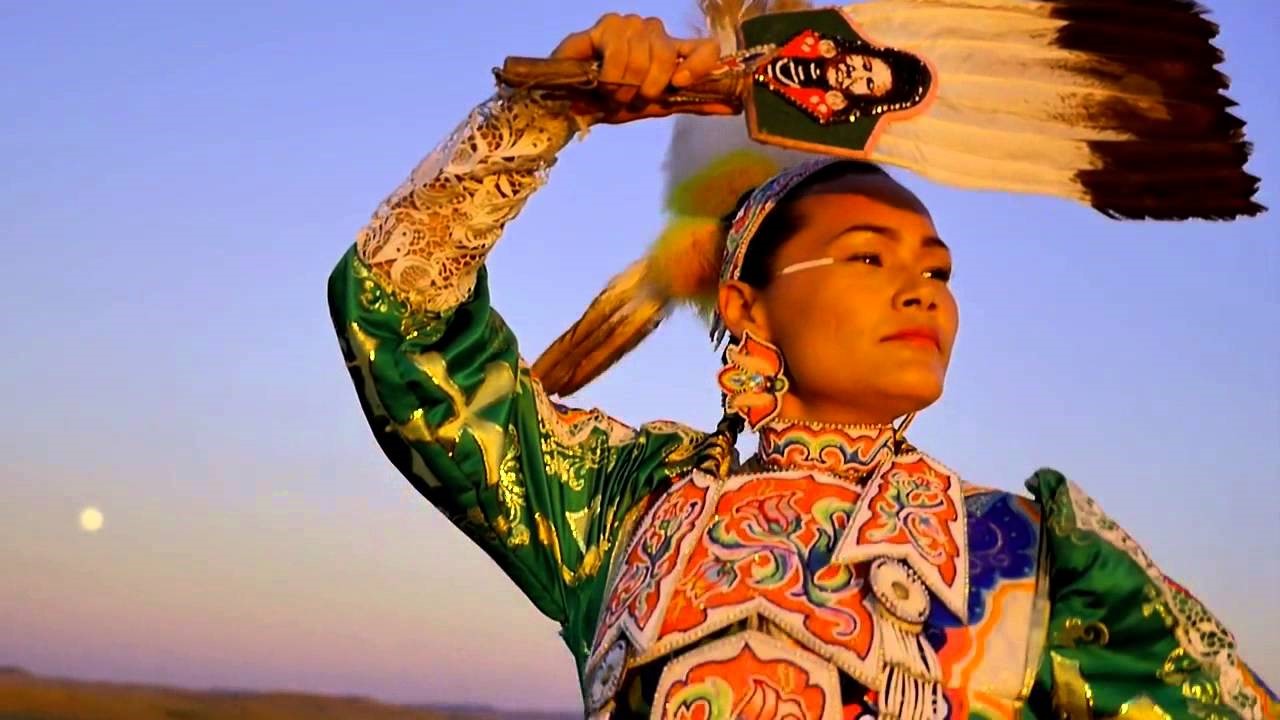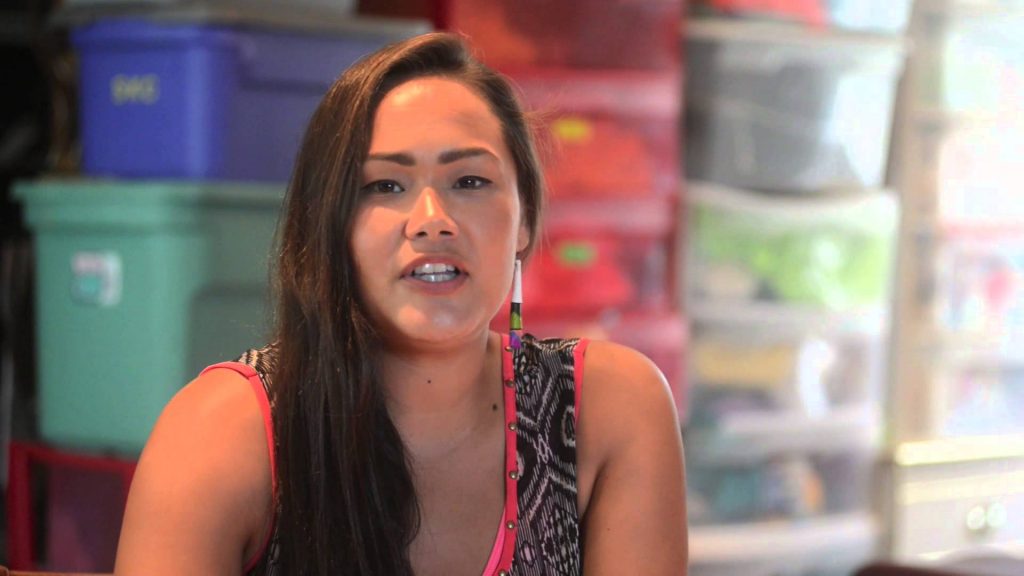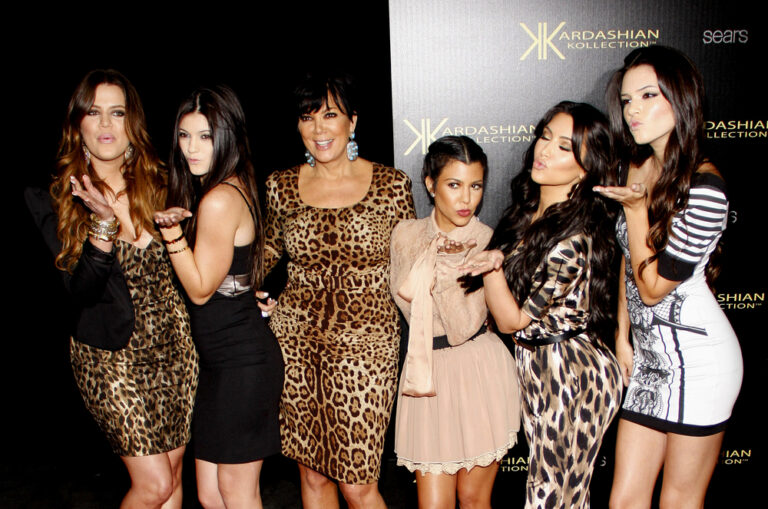
fciwomenswrestling.com article, YouTube photo
With silky smooth moves, a rhythmic feminine precision and an angelic sway, it’s as though time stood still and we’re on the sun drenched plains of the 1800s.
Watching Acosia Red Elk dance can do that to you.
It’s not a dance you’ll see in the metro dance clubs nor frat or sorority parties but its mesmerizing effect entrances.
It’s the Jingle Dance with movements of soft spirit and powerful emotions.
Jingle dress is a Native American women’s pow wow dance. The regalia worn for this dance is the jingle dress, which includes ornamentation with multiple rows of metal cones which create a jingling sound as the dancer moves.
The origin of the jingle dress is attributed to three different Ojibwa communities: the Mille Lacs, Red Lake Band of Chippewa and the Whitefish Bay Ojibwe. In both the Mille Lacs and Whitefish Bay versions, the dress and the dance appeared in a recurring vivid dream that was realized about the year 1900.
Jingle dresses were originally made of fabric in solid, “healthy” colors – red, green/yellow, black and blue. Each dress was adorned with jingles on the sleeves, the top, and one, two, or three rows of jingles on the bottom. The jingles were made from chewing tobacco can lids, rolled into cones.
The informative site indiancountrytodaymedianetwork.com shares, “There are few pow wow dances as ebullient, or as symphonic, as the Jingle Dress Dance, especially when there are multiple female dancers moving together.
The traditional dance required the dancers to never cross their feet, never dance backward, and never complete circle. They kept footwork light, nimble, and close to the ground.
Their dresses chirped as they moved. Modern Jingle Dress Dance allows more fluidity, the dancers can cross their feet, can complete full circles, and can dance backwards.

One aspect of the Jingle Dress Dance tradition that makes it so important in Indian Country is that the dance coincided with the suppression of Native American religion in the United States in 1921, with the outlawing of religious dancing.”
Very enlightening.
We also find at powwows.com additional insights. “There are differences in the origins of the dress among the tribes. The dress was seen in a dream, as an object to bring healing to afflicted people. It comes from the Northern Tribe Ojibewea or Chippewa, along the Canadian border.
Jingle Dresses are decorated with rolled up snuff can lids that are hung with ribbon. The ribbon is then sewed to the dress, The jingles are placed close enough so they can hit together, causing a beautiful sound. If one were to close their eyes as the Jingle dancer passes, it would sound as though it were raining!”
Many sensuous woman can perform this ancient dance but few like Acosia Red Elk.
Please enjoy her performance while it lasts on YouTube. https://www.youtube.com/watch?v=OiVU-W9VT7Q
There is also a captivating interview. https://www.youtube.com/watch?v=XI6tzoIJhzU
Let’s meet Acosia.
Acosia Red Elk, or Young Swan Rising From the Water, is a jingle dress dancer from the Umatilla people.
A descendant of Hin-mah-too-yah-lat-kekt, Acosia did not become interested in dancing until she was 16, when she taught herself to dance from videos of other jingle dancers.
She began dancing professionally in 1998, visiting up to 50 pow wows a year for ten years.
From 2004 to 2008 she won five world championships at the Gathering of Nations; she won again in 2011, 2014, and the 2015 competition, which she decided to enter at the last minute and had to sew a dress for the day before the competition.
In 2005, she also won the Head Woman Dancer title; in 2014, having entered 8 competitions, she won all of them.
Acosia Elk performed in Supaman‘s video for the song “Why” after having met the popular singer on the pow wow circuit.
She is currently working with her mother in a glass studio and is developing a healing arts studio for women and children who have been harmed by addiction and/or domestic abuse.
Visiting the life of Acosia provides a moving and satisfying sense of awareness and culture.

Visiting the history of the Ojibwa Indians enhances and brings Acosia’s story full circle.
Ojibwa Indians
By Pat Donaldson
The Ojibwa Indians (or Chippewa) refer to themselves as Anishnabe, a term that simply means ‘the people’. Their oral history traces their origins to the northern forests that stretch along the Atlantic seaboard in what is now known as New Brunswick and Nova Scotia. That same oral history tells of a visitation of ancestral grandfathers who warned of a race of light skinned people who would bring changes to the Anishnabe way of life.
On advice from the ancestral grandfathers the Ojibwa began a five hundred year migration process that eventually took them to the lands that surround the Great Lakes in the middle of North America. It was there that European explorers found them in the 16th century. As the newcomers learned the language they began referring to the tribe as Ojibwa – a word that means ‘pucker’ in reference to the puckered vamp of their moccasins.
They were traditionally fishers, hunters and gatherers, but at the time of European contact the bands that had settled south of the Great Lakes had also learned to farm corn and squash from their more southernly cousins.
Both the southern and northern Ojibwa included moose, bear, elk and deer in their diet but like other Eastern Woodland Indian tribes they harvested berries, roots, and wild rice. The southern tribes learned to harvest maple sap and make it into syrup and maple sugar and the northern tribes experimented with the concept and adapted the process to the harvesting of birch syrup.
Their traditional house was called a wigwam. It was made by cutting a dozen or so saplings and burying them upright in a large circular shape and then bending them over to form a dome shaped structure that was covered with layers of birch bark. Small bark covered tipi shaped structures were made when a quick temporary shelter was needed. When pressures from the Europeans caused some to migrate to the Prairies they adopted the large tipis used by the Plains tribes as their own.
The Ojibwa Indians were part of a confederacy called the Council of Three Fires which included the Potawatomi and the Ottawa tribes. To the Europeans, the Potawatomi and the Ottawa appeared as distinct groups, but they were simply part of the greater Anishnabe culture.
In the 1600’s the French fur traders befriended the Council of Three Fires. In return for firearms and European made utensils the confederacy fought on behalf of New France against the Iroquois and the British who had colonized the lower part of North America. Alliances shifted in tune with the fortunes of the British and French in North America. In the end the Ojibwa signed more treaties with France, Britain, Canada and America than any other native tribe.
Today, the Ojibwa Indians live on reservations that surround the Great Lakes in both Canada and the United States. Because of pressure from the dominant culture there are also Ojibwa communities that moved to the Great Plains in both countries.
Nokomis is an Ojibwa elder and storyteller who grew up on a trap line in the bush north of Lake Superior more than seventy years ago. She shares her art and stories at http://www.native-art-in-canada.com. Learn more about Ojibwa Indians at http://www.native-art-in-canada.com/ojibwaindians.html
~ ~ ~
PHOTO CREDITS whitewolfpack.com Photos: Christian Heeb, WHITNEY MINTHORN
Article Source: http://EzineArticles.com/expert/Pat_Donaldson/706653
Article Source: http://EzineArticles.com/4981407
http://ezinearticles.com/?Ojibwa-Indians&id=4981407
https://www.instagram.com/redelk42/?hl=en
http://indiancountrytodaymedianetwork.com/2011/01/28/origins-womens-jingle-dress-dancing-13653
http://www.powwows.com/2011/07/21/jingle-dancing/
http://www.whitewolfpack.com/2015/10/20-striking-pictures-of-world-champion.html



